
views
- Place silica gel packets in the pockets and hoods of your garments to absorb moisture while they’re in your closet.
- Invest in a dehumidifier if your closet is prone to humidity to remove water from the air and keep your clothing dry.
- Keep your wardrobe door open whenever possible to allow airflow and prevent moisture from being locked in.
Best Ways to Protect Your Clothes from Moisture

Use silica gel packets to absorb moisture. Silica gel packets naturally soak up moisture wherever they’re placed. While they aren’t a foolproof solution, place these packets in the pockets and hoods of your garments to soak up moisture and prevent your clothes from becoming moldy.
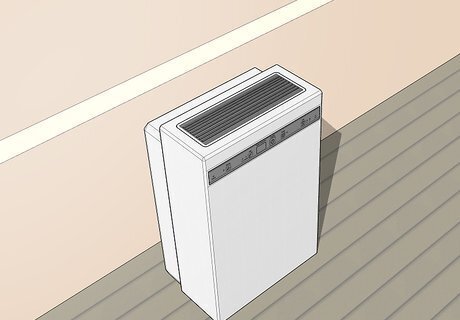
Install a dehumidifier in your wardrobe. Dehumidifiers remove water from the air, reducing the moisture in an enclosed space. If your home and wardrobe feel humid constantly, using a dehumidifier can help keep the air (and your clothes) dry and balanced. If you don’t have a dehumidifier, you can also use an air conditioner to keep the air cool and dry.
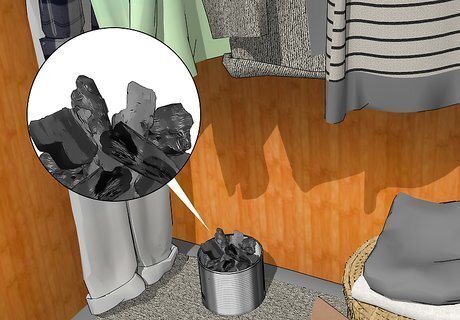
Store a tin of charcoal in your closet to absorb moisture. Fill a large container or coffee can with plain charcoal briquettes that aren’t designed for grilling. Secure the lid on the coffee can or other container, then poke the top a few times. Keep this can in your closet to soak up moisture and keep your clothes dry. Charcoal works as an impromptu, natural dehumidifier as it naturally soaks up moisture.

Set up a fan in your closet if your clothing looks or feels moist. Find a wall outlet near your wardrobe and plug a box fan in. Situate the fan so it’s pointed at the front of the wardrobe. If you suspect your wardrobe is overly humid, turn the fan on to a low setting and let it air out the area. Alternatively, you can open a window to air out your wardrobe. If only a few clothing items look damp, this might not be necessary.

Keep your closet door open, even when you’re not in the room. Get in the habit of keeping your wardrobe open, regardless of the time of year. If you’re going on vacation or heading out for the weekend, leave your wardrobe open so it can air out while you’re away.
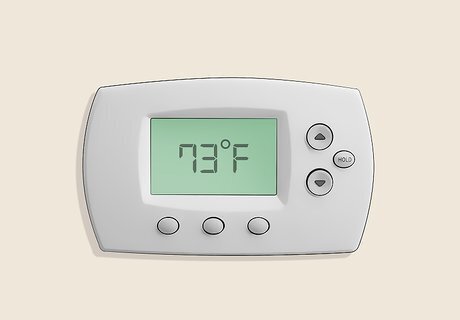
Keep your wardrobe at a consistent, cool temperature. Check your thermostat to make sure that the temperature isn’t spiking and dropping constantly. Try to keep your wardrobe temperature beneath 23 °C (73 °F) so your clothing can stay as fresh as possible. If the temperature changes a lot, your clothes might lower in quality.

Check that your clothes are clean and dry before you hang them up. If your garments still feel wet or damp to the touch, hang them up in an open area so they can air-dry. If you find dirty clothing in your wardrobe, be sure to set it aside so you can wash it.
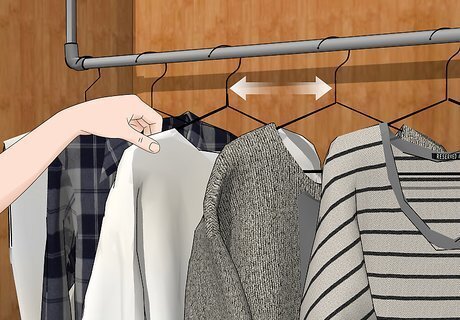
Rearrange your clothes so they aren’t packed tightly together. Moisture and mildew go hand in hand, especially when your clothes are packed like sardines. Remove any off-season clothes from your closet, and store your fancier garments in perforated bags, which gives them room to breathe.

Spritz your clothes with a water-repellent spray. While commonly used by campers and hikers, water-repellent sprays can give your clothing a protective, moisture-resistant layer. Spray the product all over the outside of your clothes before storing them in your wardrobe, and you may see positive results. A lot of these sprays are made with silicone. If you have an allergy, this product might not be a good option for you.
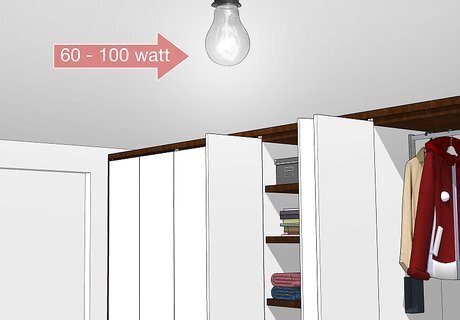
Hang a low-wattage bulb in the closet to provide extra heat to the area. Purchase a small, 60- to 100-watt lightbulb. If your home’s wiring permits, install the bulb from the ceiling of your wardrobe. Keep this light turned on as often as you can, as it can warm your clothes. This works best in smaller closets and wardrobes.
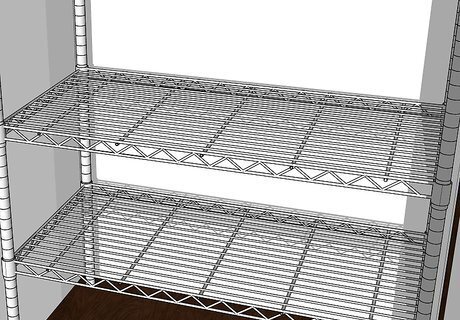
Install plastic-coated shelves in your closet so moisture doesn’t build up. Closet shelving that’s coated with plastic helps prevent moisture from building up in your closet and around your clothes. Invest in a shelving unit, and use the instructions to install (or hire a professional for help).
How to Remove Mold from Your Closet and Clothes
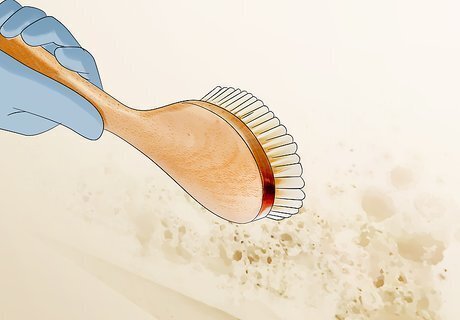
Scrub the affected area with detergent to remove mold from your closet. Take everything out of your closet if you notice any mold or spores in the area. At this point, pour a spoonful of all-purpose detergent or soap into a basin of warm water, then dip a sponge into the mixture. Wipe down any moldy sections of your closet to sanitize them, and wait an hour or so for your wardrobe to air-dry. Don’t put anything back into your closet until the area is dry and no longer smells musty or moldy. If you’re dealing with a lot of spores, mix 1 cup (240 mL) of bleach with 1 gallon (3.8 L) of water and use the solution to clean off the surface.
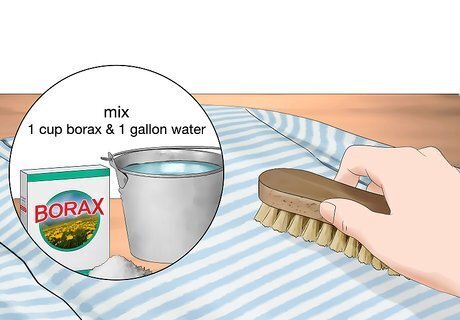
Clean your clothes with borax to get rid of any mold. Use a small, handheld vacuum to suck up any mold spores from your clothing. Mix 1 cup (204 g) of borax into 1 gallon (3.8 L) of water, then rub the cleaner onto your affected clothing with a bristled brush. Blot away any excess liquid, then let your garment air-dry completely. Always check the care labels before washing your clothes at home.

Sanitize your clothing naturally with white vinegar if they have mold on them. Fill a spray bottle with distilled white vinegar and spritz down any affected clothing. Set a timer for 1 hour to let the vinegar soak into the fabric, then dab at your clothes with a water-soaked rag. Once the vinegar is completely cleaned out of the material, let your clothing air-dry for a few hours.
What causes moisture in closets?

Humidity The leading cause of moisture and mold in closets is humidity. Humidity is the amount of water vapor in the air. The higher the humidity, the wetter and damper a space will feel. Mold loves humid spaces, and because closets don’t typically get adequate airflow, they become the perfect breeding ground for spores.

Water damage A leaky pipe or drip could be the cause of moisture in your closet. If you notice that your clothes are damp or not as fresh as they should be, check the ceiling, floor, and walls of your closet. Excess water or condensation may be the cause of the problem. If you spot any water leaks, have them repaired by a plumber or other professional to prevent further damage.
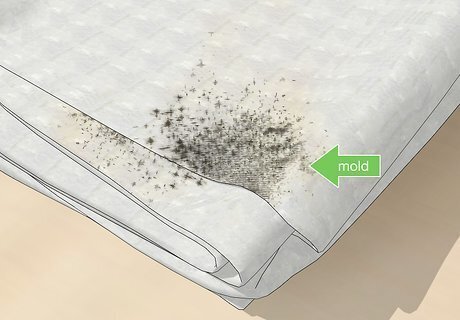
Moldy fabrics Moisture could be a product of mold itself. To avoid this cause of a stinky, mildewy closet, make sure to clean out your closet regularly. Not only does this prevent mold from spreading, but it can also help control your closet’s environment.


















Comments
0 comment